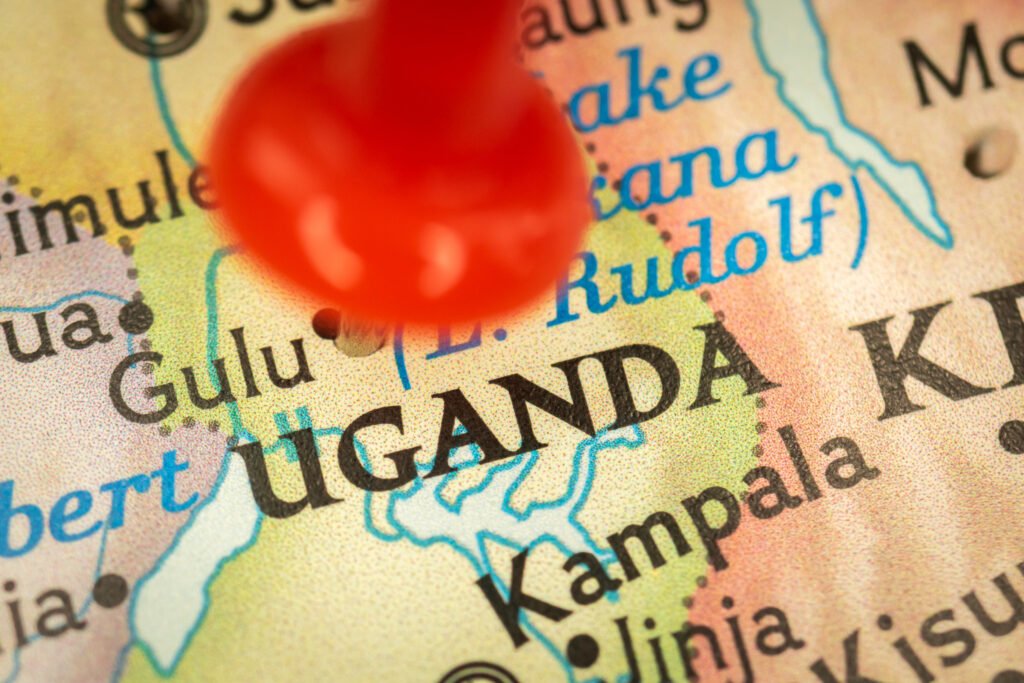Planning a trip to Uganda is exciting. Maybe you’re imagining tracking gorillas in Bwindi, feeling the mist of Murchison Falls on your face, or just exploring local markets and vibrant culture. But then, you submit your Uganda eVisa application… and it gets rejected. Yikes!

Businessman feeling headache while doing distance work in coffee shop tired with failure of plans.
Take a deep breath. It happens more often than you think. A rejection isn’t the end. You can reapply, and usually, it’s easier than it first seems—especially once you know why it was rejected.
Why eVisas Get Rejected
There are a few common reasons that travelers’ applications get turned down:

The visa is denied, not given a visa. Flat design, vector illustration, vector.
- Typos or wrong information: Even a single wrong letter in your name, passport number, or date of birth can trigger a rejection. It’s frustrating, but it’s true.
- Passport problems: Expired, damaged, or unreadable passports are automatic red flags. Your passport needs to be valid for at least six months after your trip.
- Past travel history: Overstays or visa issues in other countries can sometimes affect Uganda eVisa approval. Transparency helps—trying to hide it usually backfires.
- Suspicious documents: Any fake or misleading papers will get your application denied. Stick to honest, accurate information.
- Health or security alerts: Rarely, missing vaccinations or security warnings linked to your passport can cause a rejection.
Most of the time, though, rejections happen because of small errors rather than serious issues. That’s why reapplying carefully usually works.
Steps to Take Before Reapplying

Stamped the document to approve
- Read the rejection notice carefully.
The email or notification usually explains the reason. Knowing exactly what went wrong helps you avoid repeating it. - Double-check your passport.
Make sure it’s valid, readable, and matches the information you enter in your application. - Correct mistakes in the application.
Typos, missing information, or small errors are easy to fix—but make sure you really check everything. Names, passport numbers, travel dates… every detail matters. - Provide extra information if needed.
If past travel history or unusual circumstances contributed to the rejection, attach a short note or supporting documents explaining the situation. Clear explanations help officials understand your case.
Tips for a Smoother Reapplication

Passports with visa stamps and pen on white wooden table, closeup
- Apply early. Don’t wait until the last minute. Applying a week or two in advance gives you room to fix any errors.
- Stay organized. Keep your passport, itinerary, and any documents ready before starting the new application.
- Be honest. Hiding past issues can make things worse. Transparency almost always works in your favor.
- Double-check your email. The eVisa confirmation will be sent there. A small typo could mean missing your approval notice.
- Stay calm. It’s easy to panic, but rushing leads to mistakes. Take your time and approach it methodically.
Reapplying for Children
If a child’s Uganda eVisa is rejected, parents or guardians can reapply for them. Babies, toddlers, or older children all need their own eVisa. Accuracy and proper documentation are just as important for minors as they are for adults.
When reapplying, accuracy is key. Double-check every detail on the application: the child’s full name, date of birth, and passport number must match exactly what’s on their passport. A small typo or missing number can cause delays or even another rejection, which could disrupt the whole family’s travel plans.
Parents should also ensure that all supporting documents—such as travel itineraries, consent letters for minors traveling with one parent, or medical documents if applicable—are included if the form allows. These details help immigration authorities process the application smoothly and reduce unnecessary questions at the border.
Wildlife and Gorilla Trekking
If your goal is gorilla trekking in Bwindi or Mgahinga, the dry seasons are ideal. Trails are more accessible, and sightings are easier. However, many travelers also enjoy the green, quiet rainy months, which offer a more serene trekking experience—but be prepared for muddy paths.

Dominant male mountain gorilla in the grass. Uganda. Bwindi Impenetrable Forest National Park. An excellent illustration.
For safari in Queen Elizabeth or Murchison Falls National Park, dry months are best. Animals gather around waterholes, making them easier to spot, while the short rains also bring vibrant landscapes and fewer tourists.
Tips for Travelers
-
Book gorilla permits early, especially during peak dry season—they sell out fast.
-
Pack for unpredictable weather. Even during dry months, afternoon showers can happen.
-
Layer clothing: mornings and evenings can be cool in higher elevations, like Bwindi.
-
Bring waterproof shoes for rainy season trekking.
Final Thoughts
Getting a Uganda eVisa rejected can be stressful, but it’s rarely permanent. Most rejections are due to small errors that you can correct with a careful reapplication. Take a look at why it was rejected, fix the mistakes, make sure your passport and documents are valid, and submit again.
Once your eVisa is approved, you can focus on the adventure—gorilla trekking, chasing waterfalls, exploring local culture, or just soaking in the amazing scenery. Travel hiccups happen to everyone, but with patience and a careful approach, you won’t let a rejection stop your plans.







